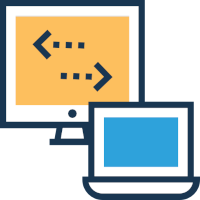Step 1 – Cloning option
In the Operations menu in any Epics you can find the option Clone template.
Clone template option is available in Epic issues only.
If you click on Clone template option, system dispalys form where issues details can be edited before cloning like in the picture below.
Step 2 – New Epic details
In first section Epic details can be edited before being cloned.
New Epic Name
In that field, a new Epic Name can be entered.
The field can’t be empty – this is mandatory to clone issue.
New Epic Summary
In that field a new Summary can be entered.
The field can’t be empty – this is mandatory to clone issue.
New Epic Assignee
In that field, a new Assignee can be selected.
Up to JIRA set up, the field can be mandatory or optional.
New Epic Due Date
New Due Date for a new Epic can be chosen.
If your workflow doesn’t require this field, it can be empty.
New Fix Version/s
New Fix Version/s for new Epic can be chosen.
If your workflow doesn’t require this field, it can be empty.
New Epic Description
Description can be entered.
Step 3 – Clone components
Next section is Clone components. User can make a decision which issues’ components must be cloned.
Sub-tasks
If Sub-tasks option is ticked, all sub-tasks in Epic and in linked issues will be shown.
You can choose which sub-tasks in Epic template you would like to clone. You can change values of specified fields.
The possibility to hide/show all sub-tasks.
You can choose which sub-tasks in linked issues template you would like to clone.
You can change values of all fields – Additional fields.
Attachments
If Attachments option is ticked, all attachments in Epic, linked issues and sub-tasks (if selected) are cloned.
Watchers
If Watchers option is ticked, watchers of Epic, linked issues and sub-tasks (if selected) are cloned.
Comments
If Comments option is ticked, comments from Epic, linked issues and sub-tasks (if selected) are cloned.
Issue Links
If Issue Links option is ticked, issue links within cloned issues are also cloned.
Step 4 – Cloning strategy
In section Epic linked issues, clone strategy can be chosen. There are two strategies available:
Linked issues cloned to the project where Linked issues already exis
Choose this strategy if linked issues should be created in the same project where template issues exist.
Use this strategy:
- If cloned epic and issues should be created in the same projects where template issues exist.
- If cloned Epic should be created in a different project and linked issues should be created in the same project where template issues exist.
Take a look at the picture below – you may see the result if one select this strategy.
Linked issues cloned to the same project as Epic task
Choose this strategy if all linked issues should be created in the target project as was selected for New Epic.
Use this strategy:
- If you want to clone all issues (epic + linked issues) to one project even if templates issues are in various projects.
- If you want to clone linked issues to the same project where new epic will be created.
Take a look at the picture below – you may see the result if one select this strategy.
Step 5 – Linked issues
You can decide if you want to clone all linked issue or only some specific. On the left-hand side, tick all you want to clone.
Remember that if sub-tasks are hidden via “Hide sub-tasks” button, selecting/unselecting all issues via top checkbox will not affect them.
Step 6 – Editing
Fields selection
Before cloning, you can change issues values. You can change or remove existing values for all fields visible on the linked issues list.
Please keep in mind that if you change values in the table, source template issues will be not changed.
You can select values visible in linked issues grid table. To add values to the list, please select proper custom fields in Additional fields editbox.
For strategy Linked issues cloned to the project where Linked issues already exist, issue type can’t be modified.
For strategy Linked issues cloned to the same project as Epic task, issue type can be changed.
Single edit
To change the value, just click on field you want to change and enter new value.
Bulk edit
If you want to provide the same value to all linked issues, you can use bulk edit option available for any fields.
To do it – just click on pencil icon next to the field name in the table header, enter the value/values, select edit option and click on the “Apply to all” button.
As a result, provided value/values are filled in all linked issues.
Remember that if sub-tasks are hidden via “Hide sub-tasks” button, bulk edit will not affect them.
Step 7 – Cloning
If epic and linked issues are ready to be cloned, just click on “Cloning” button, and new Epic with selected issues will be created.
















